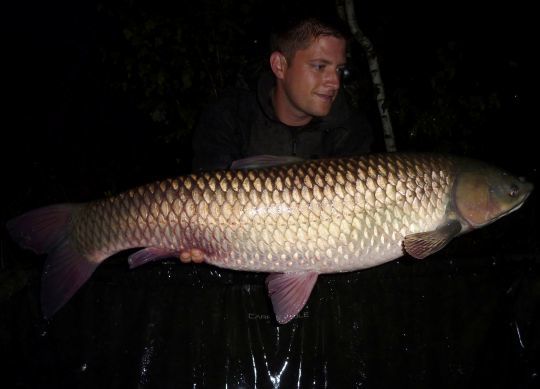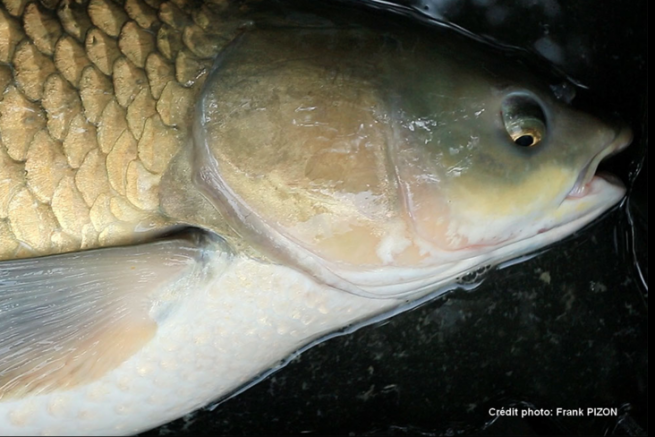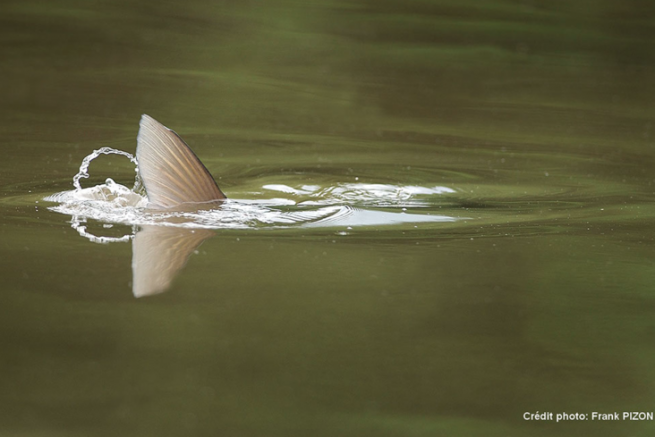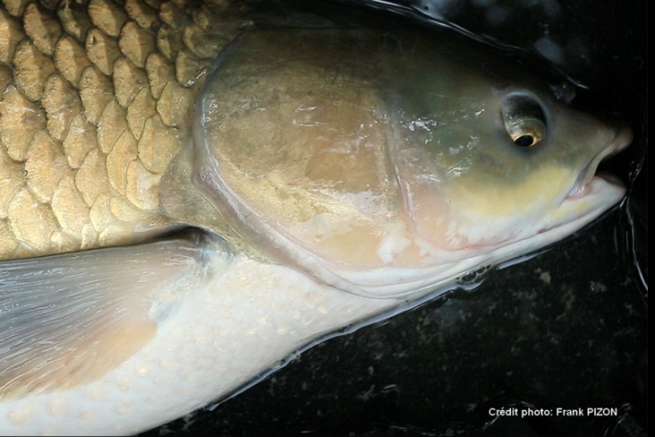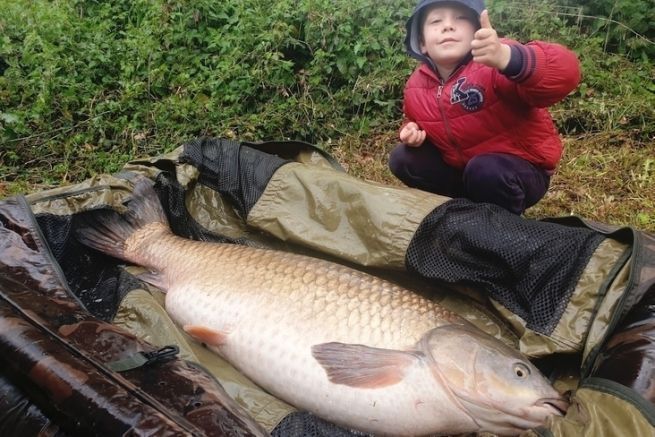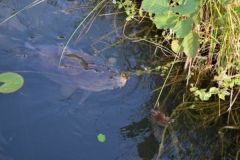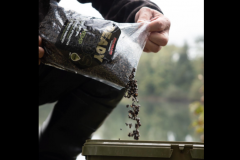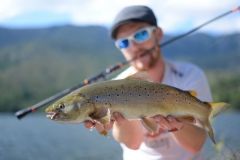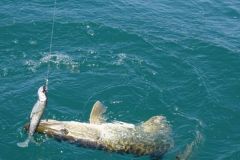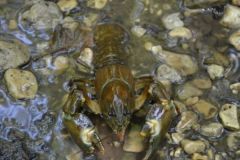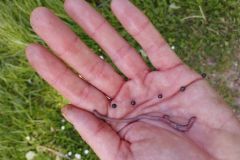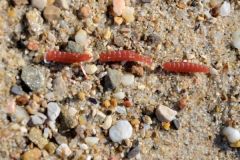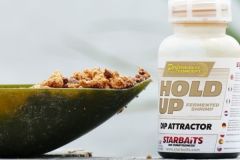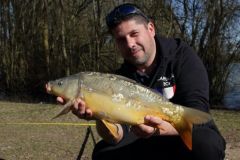During a family vacation, I spotted a few white loves on the surface of a few hectares of water, including one rather impressive subject. It was a bit of an inadvertent discovery, even though being at the water's edge is never a coincidence. So it was decided! I'll try my luck there some day.
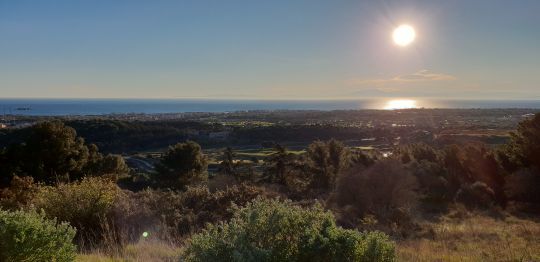
Even on vacation
The Freeway concept from Starbaits has the huge advantage of reconciling family vacations and fishing equipment. Just great!
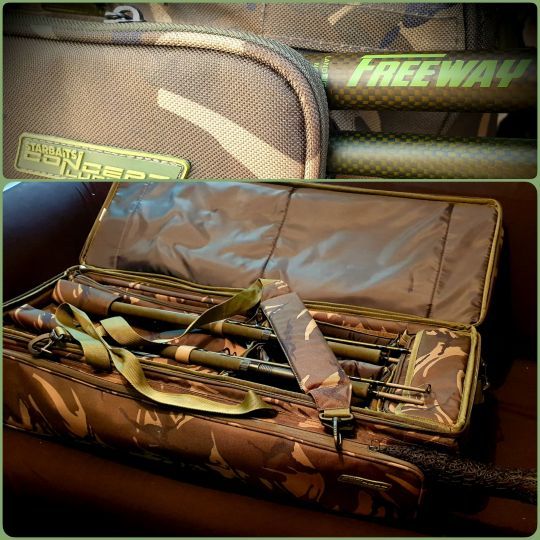
I'll use a seed mix of corn, tigers and lupins. This mixture will be enriched with large-diameter boilies specially rolled in search of true love.
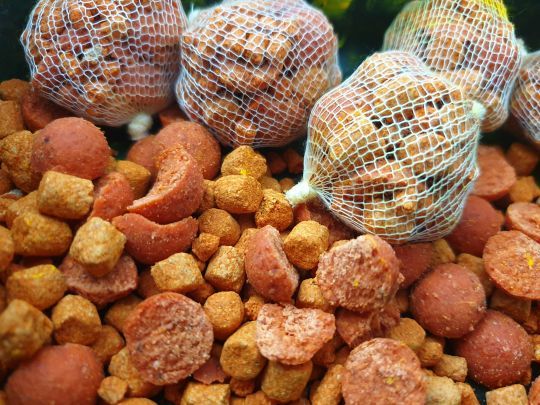
During my previous investigations, I'd spotted two very interesting spots: a shoal barely 2 m deep filled with weeds and a deeper area (around 3 m) virtually devoid of tall weeds, but covered with a filamentous layer that lined my rig every time I brought it back. It was therefore necessary to adapt, particularly in terms of the mounts.
Priming and technique
For 4 days, I'll be baiting the two chosen zones rather broadly to encourage the fish to move around to feed. Each zone will host around 5 kg cooked of my mix. That's 10 kg per day. This seemed a sufficient amount to me, as the known density of grass carp was rather low and the presence of undesirables not very important. As the grass carpet on the shoal is very dense, I'll be fishing over it with a 1-metre leader baited with a floating bait. The other line fished on the second spot will be a 30 cm leader with the bait just above the filamentous mat. Please note that I'll be fishing three days in a row with only two rods.
Don't make a fuss
Whatever type of fishing you choose, when it comes to rigs, you need something solid. Whether you're surface fishing, bottom fishing or zigging, the rigs you use and the materials they're made of must be sturdy enough to avoid any setbacks. Love is adept at violent head strikes and repeated rushes. It's a real sport, even if the fight doesn't really start until a few metres from the shore, as our fishy athlete tends to run towards our feet or let himself be dragged along. But close to the edge, he's capable of picking up several metres of line in a very short space of time. Love's mouth is very hard. So you need a heavy sinker weighing at least 140 g for optimum penetration of the hook point. My sinker is attached to a sinker clip threaded onto Starbaits XCore Leadcore. The hook must be strong and perfectly sharp to penetrate the cartilaginous mouth. I prefer hooks with a long shank. They must be iron-strong otherwise the risk of opening them is great. I now use the Power+ Hook Long Shank and the Curved Shank for spinner rigs.
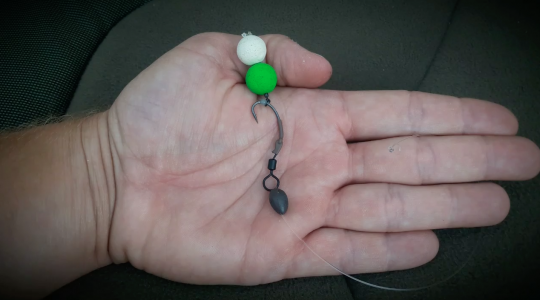
The leader When it comes to leader material, strippable braids such as X-Wrap are perfect for making traditional-length leaders with a predominantly floating feel. Although a 20/30 cm leader is more than sufficient for fishing on a stain, it is often necessary to lengthen it to fish over weed mats or simply to fish the layer of water where the fish are. In this case, or when using Spinner Rig, I use Shadow in 40 or 50.
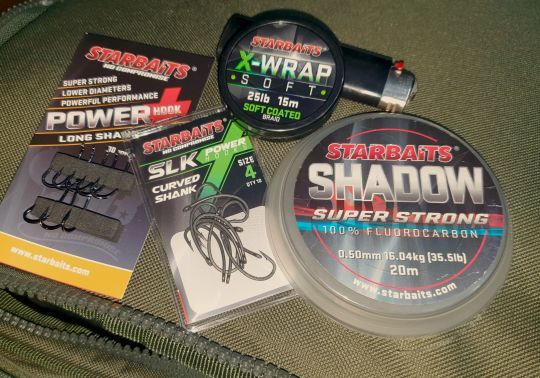
The best presentations
Floating presentations are quite interesting, especially as they encourage the bait/hook assembly to be grasped. This is really the main interest of this rig.
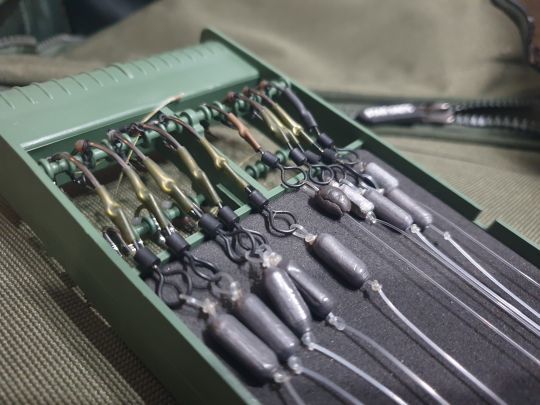
However, dense or balanced presentations should not be neglected, despite general beliefs, otherwise what's the point of priming on substance? Don't hesitate to vary your presentations until you find the most effective one for the moment. A very important point to remember: unlike carp, love catches its bait. Consequently, the hair should be as short as possible so that the lure takes hold of the whole and not just the bait. Beware of false bites or unhooks resulting from a bad bite. As a matter of fact, bites most frequently result in the up and down movement of our outriggers, as a result of the post-seizure headbutts that allow the lovebaits to snatch their booty. We also often catch grass carp in the middle of aquatic forests. It can therefore be interesting to use braid in the line body to extract the fish more easily from the weeds.
The great white responds
On D-day, when I arrived at the station, the south-westerly wind was blowing quite hard. Observation is difficult and it's hard for me to confirm the presence of lovebirds on the spot. But it doesn't take long to be reassured. My rod on the shoal panics. The pendulum elevators. Without a doubt, it's a great white (or a small one, for that matter). The fight is typical. When you're used to it, it's almost impossible to make a mistake in identifying the fish.
A characteristic battle
After the strike, when you make contact and if there's no obstacle or bank nearby, you may feel as if you're bringing in a big branch or a small fish with little fight in it. But when you get close to the bank or the landing net, the pace changes! The battle begins! You have to be vigilant right to the end, and adjust your drag precisely to ward off head-butts and powerful rushes. This hard-nosed fighter is capable of lashing out dozens of times before surrendering. Be careful when putting in the net, because love is a net destroyer who, at the slightest friction, takes off again like a rocket or simply jumps to escape.
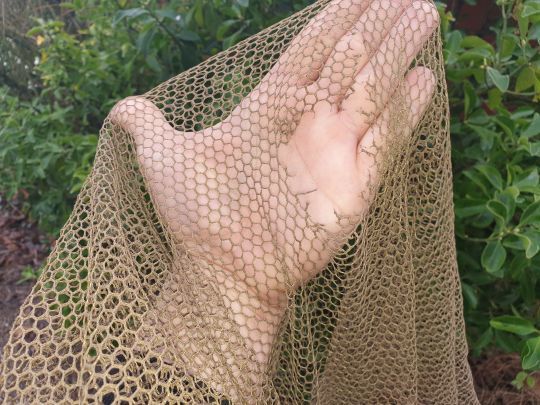
A big surprise
This first fish was no exception. And what a surprise it was when we weighed in, weighing in at over 22 kg.

I'd made it a hidden goal ever since I first saw it! It was done, and in a very short time. I have to admit, in retrospect, that the achievement was a bit cheeky, but let's enjoy it. Another love story that will go down in my fishing memory. Other, more modestly-sized loves would come to visit me in the days that followed.
